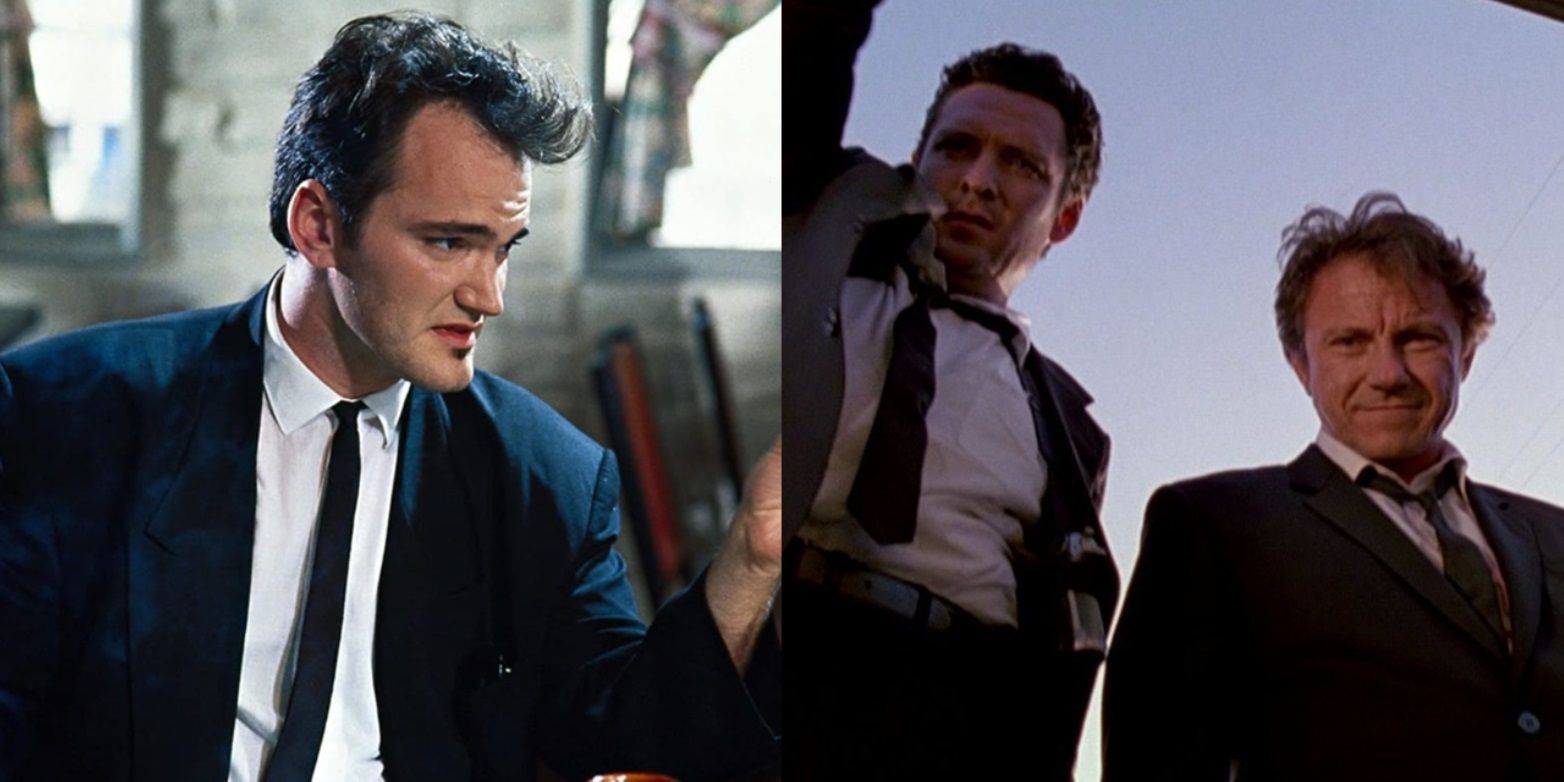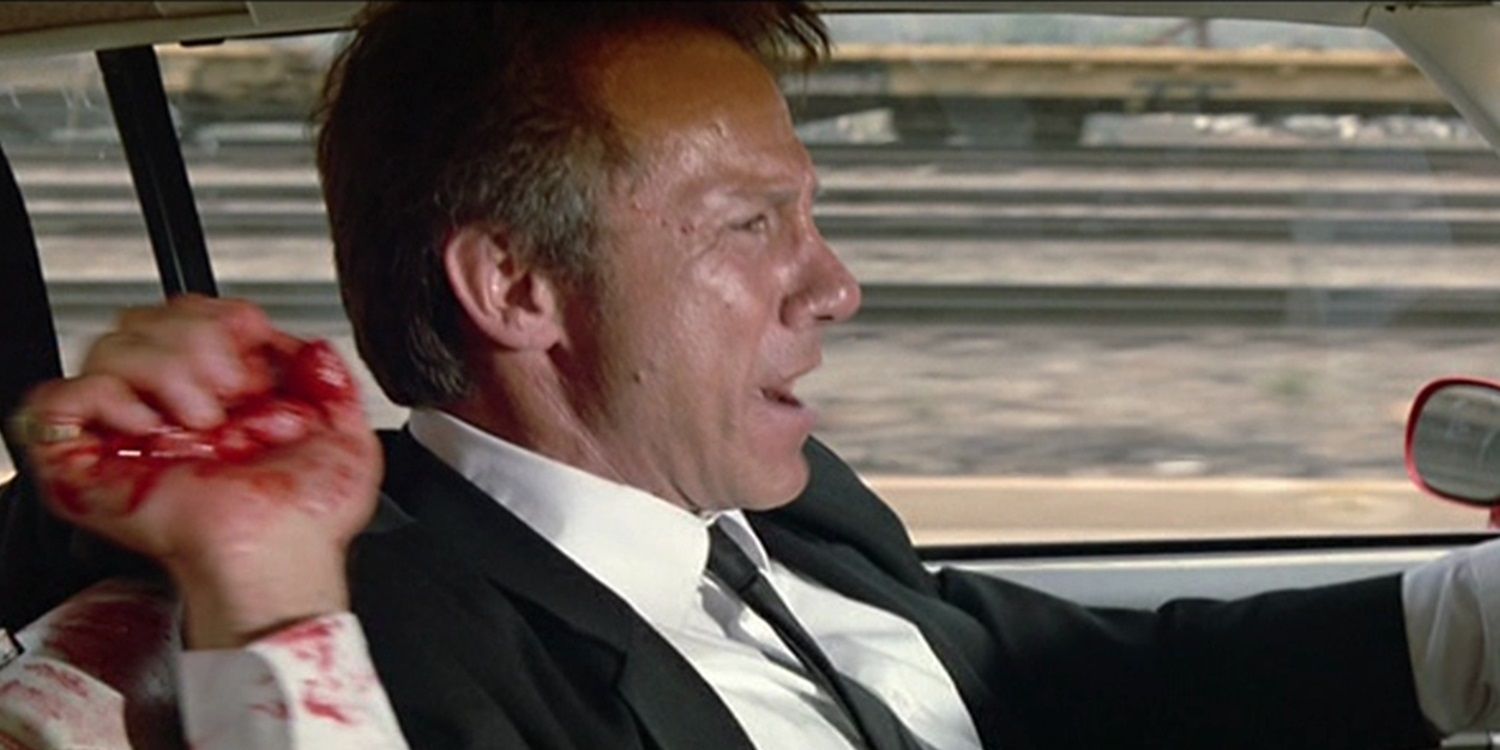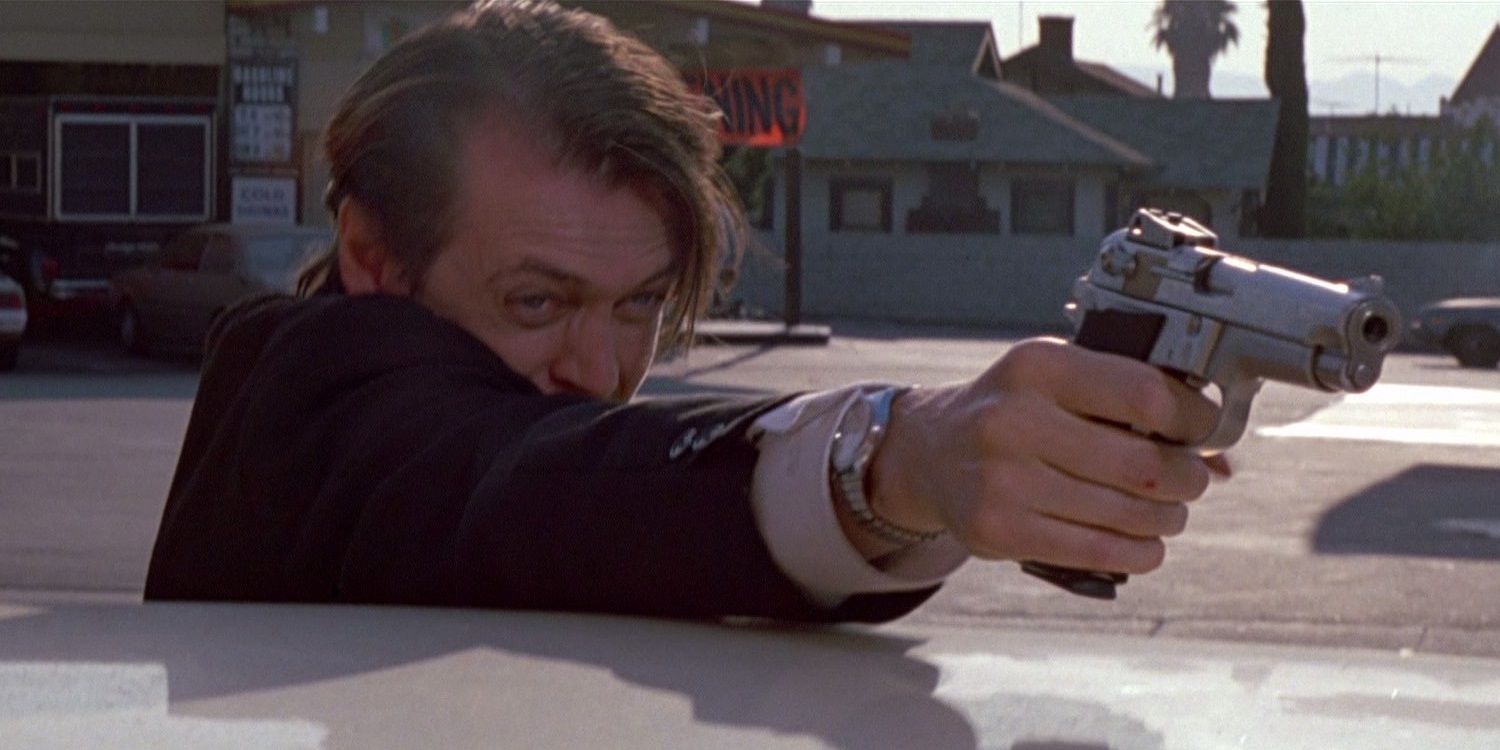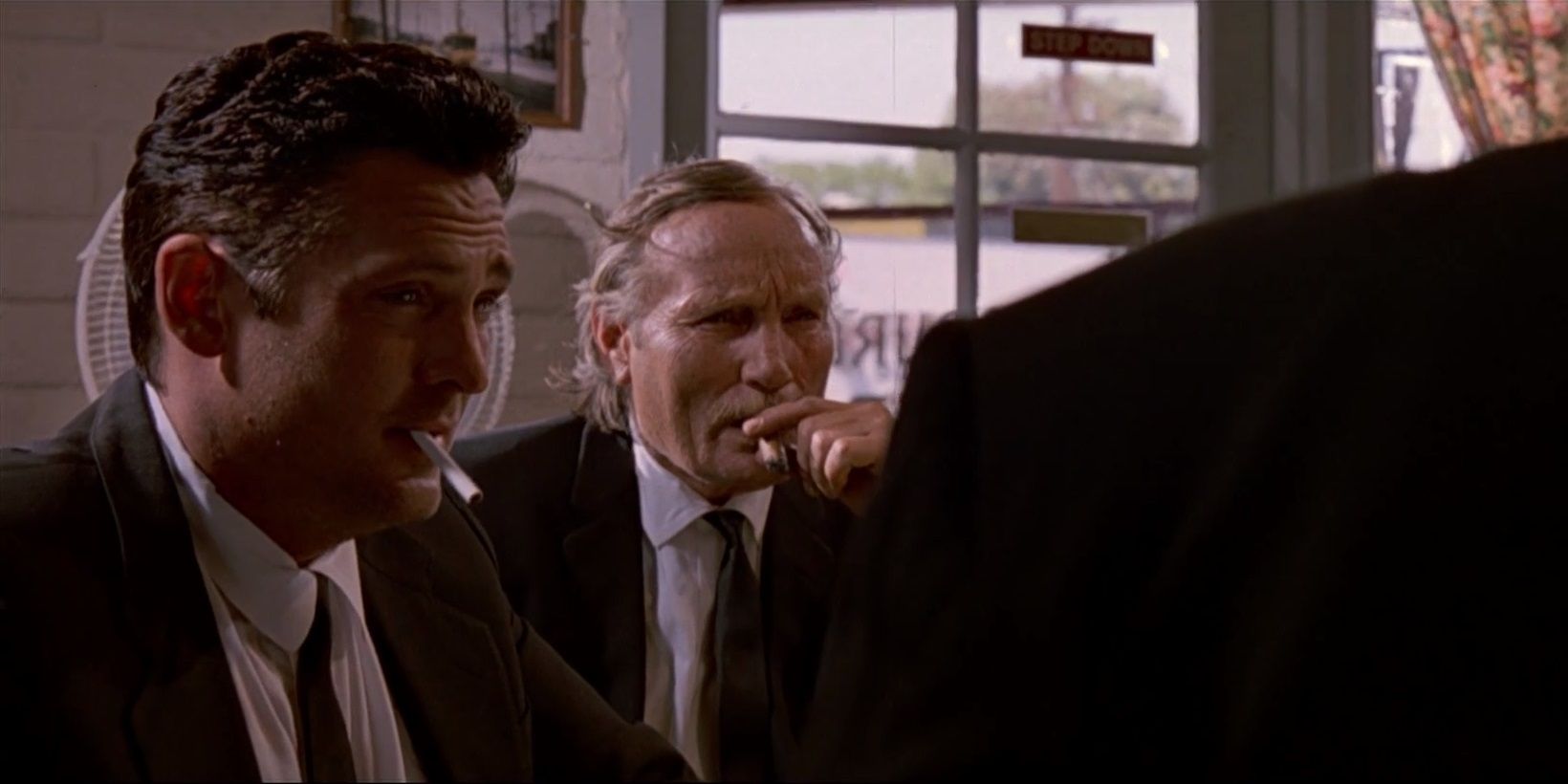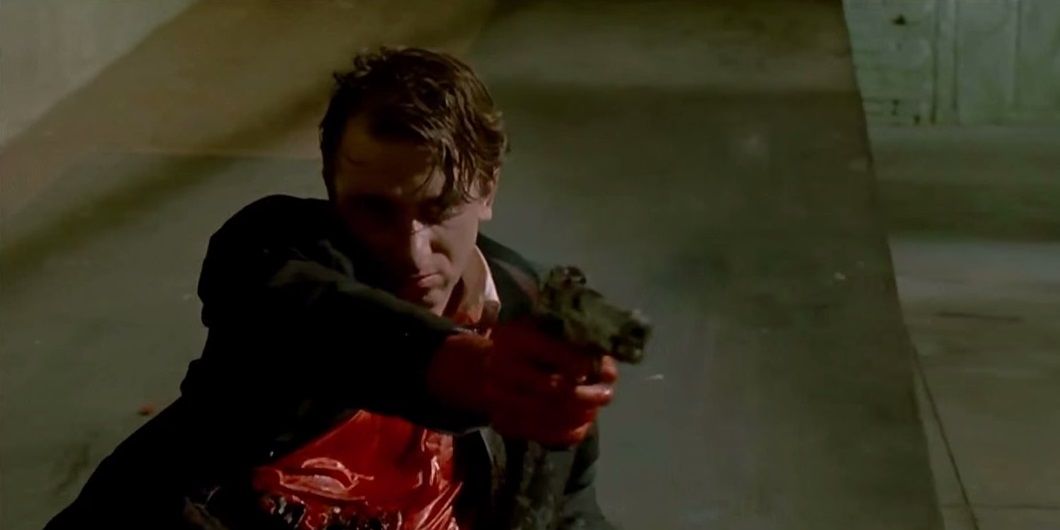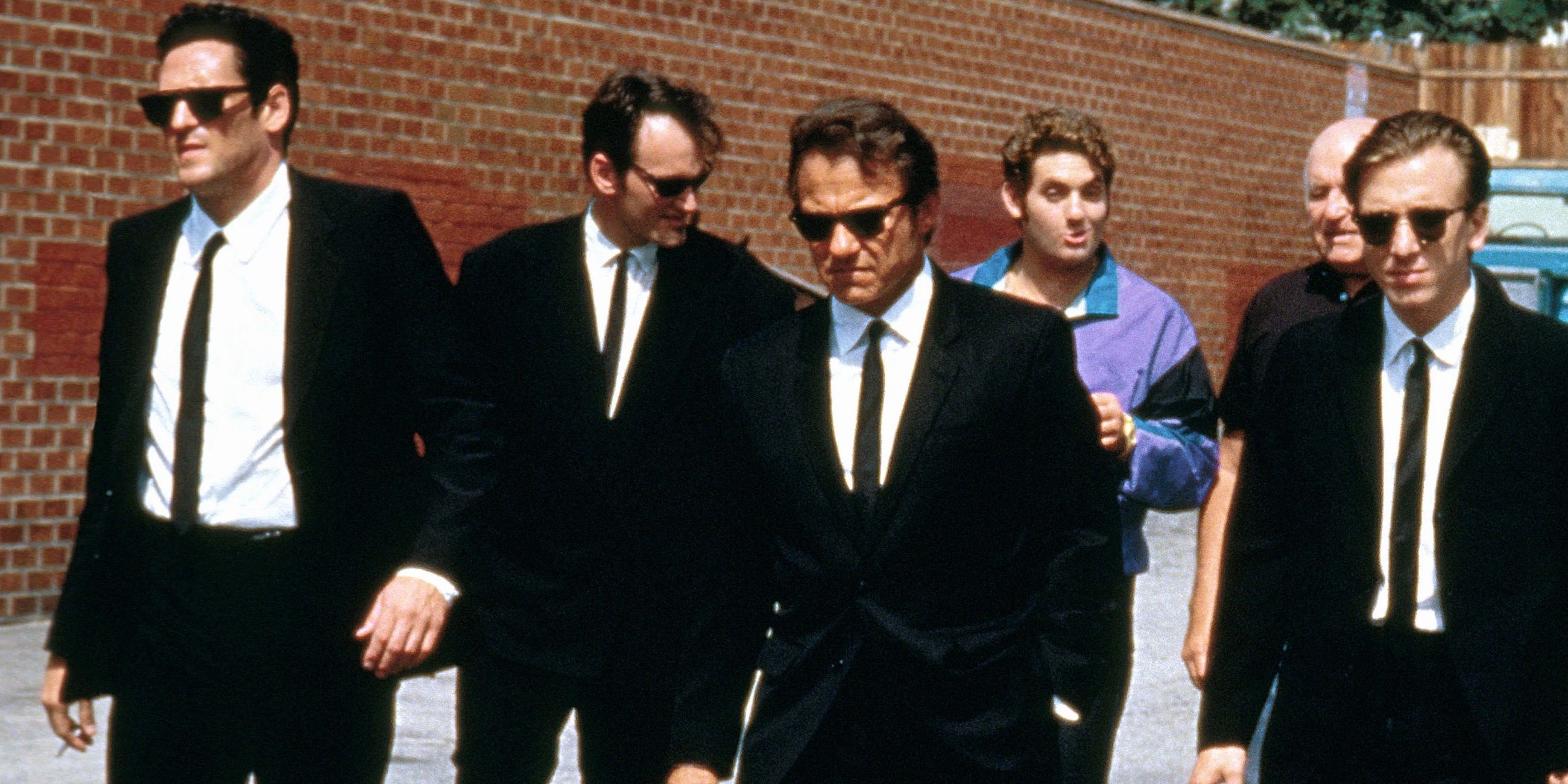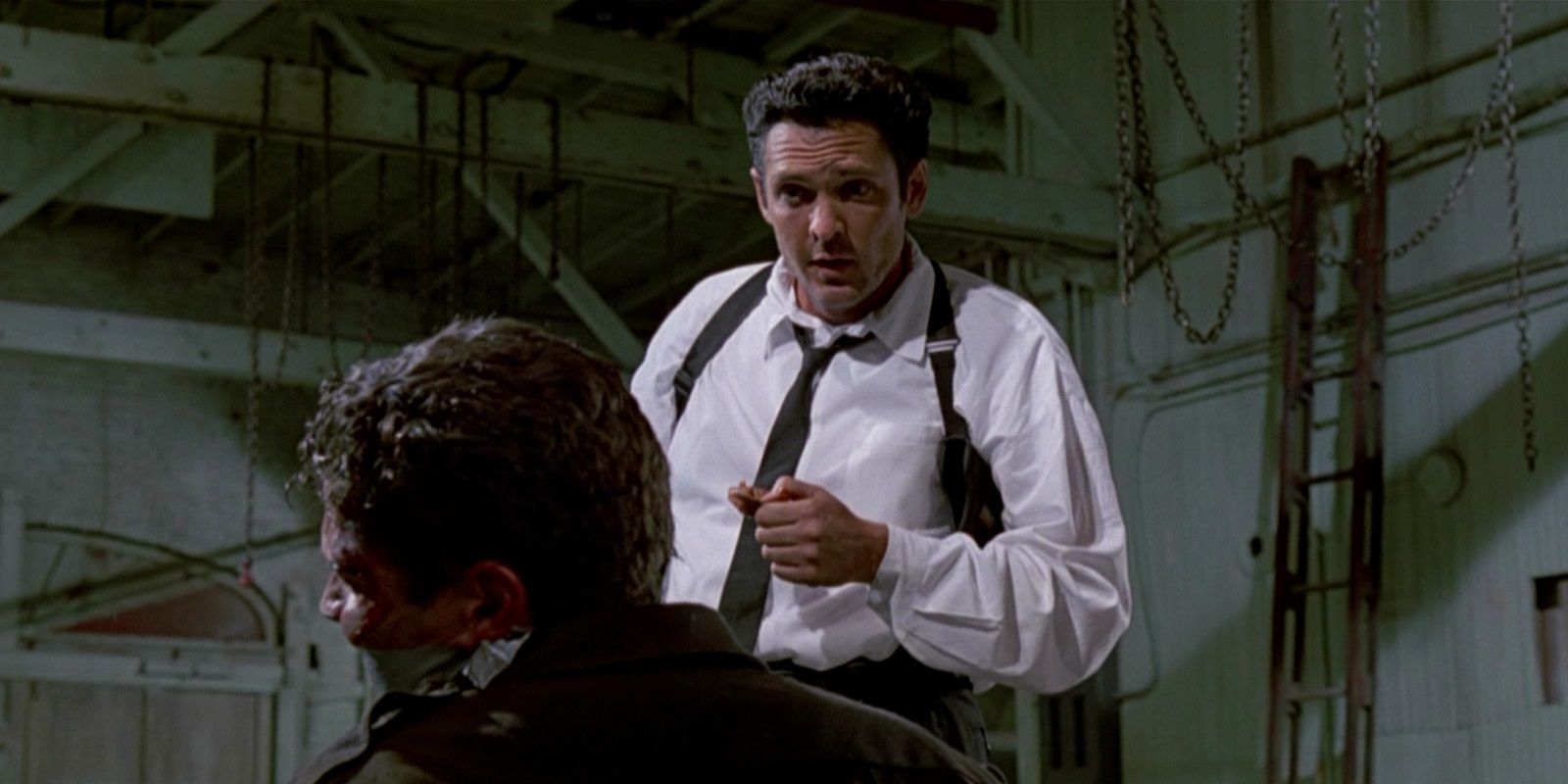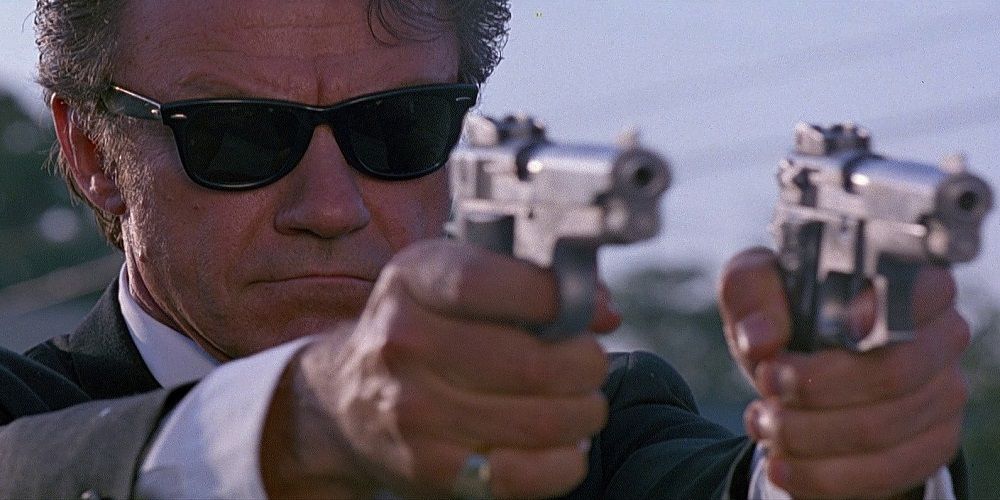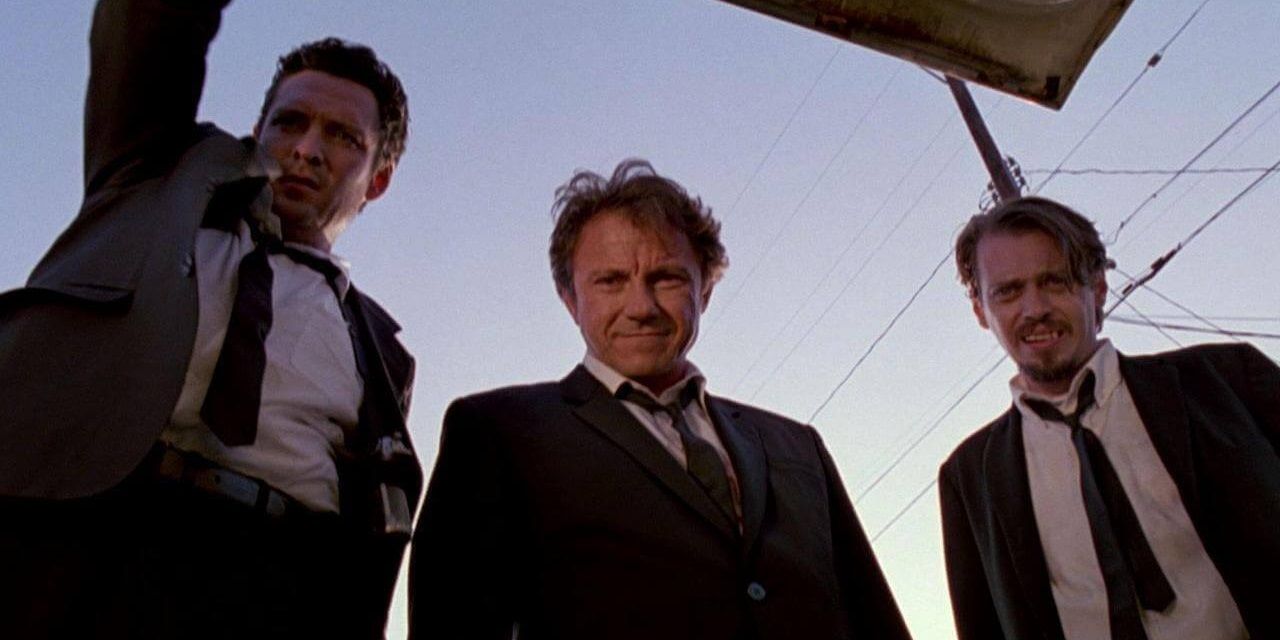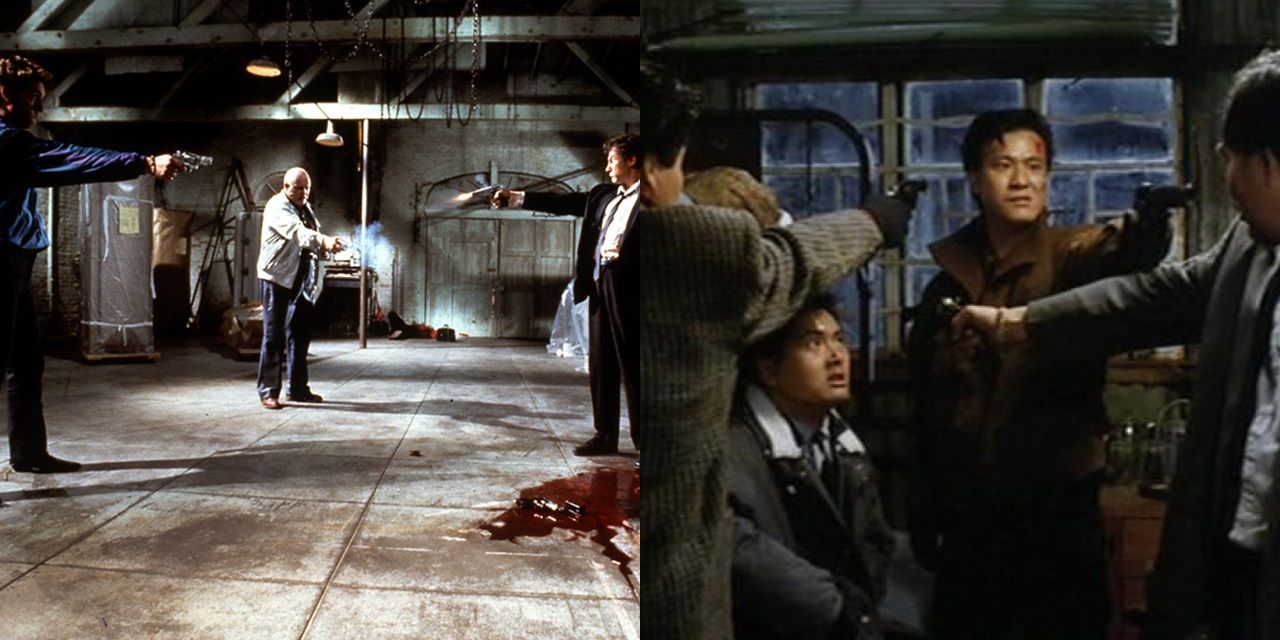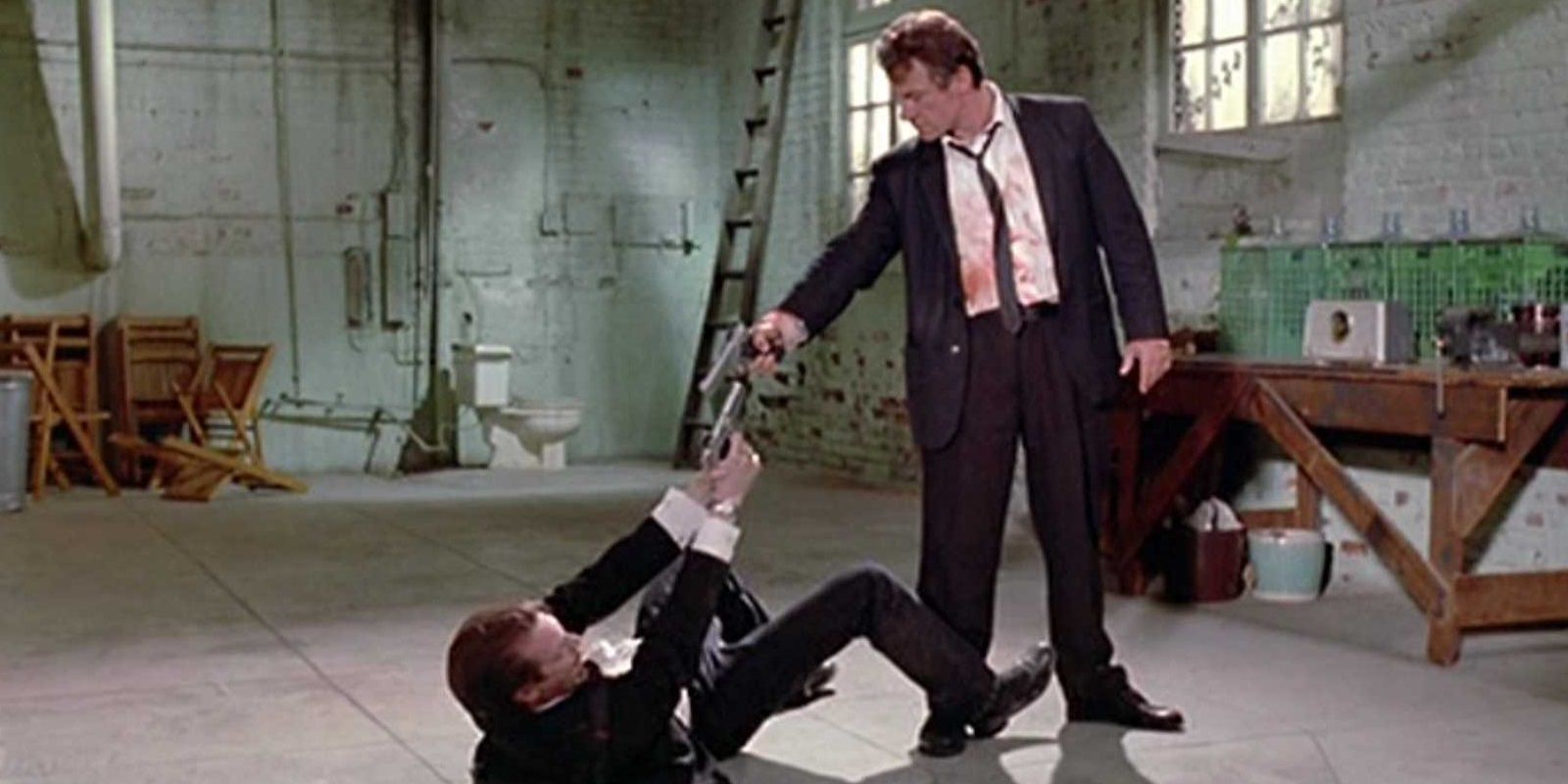Quentin Tarantino’s first movie, Reservoir Dogs, is one of the most timeless and acclaimed debut features ever made. It helped to revitalize American independent cinema in the early 1990s, and kicked off a hugely influential filmmaking career. Despite being the director’s first ever movie, produced on a shoestring budget, Reservoir Dogs managed to round out the familiar Tarantino style from the offset.
From graphic violence to nonlinear storytelling to soundtrack needle-drops, Reservoir Dogs established many of Tarantino’s directorial trademarks right out of the gate.
Nonlinear Narrative
Tarantino rarely tells his stories in chronological order. Sometimes, it can be more interesting to bounce around the story timeline. Reservoir Dogs opens before the heist, then jumps forward to the aftermath of the failed heist.
After that, it goes back to explore the planning of the heist to show how an undercover cop managed to infiltrate the crew before returning to the present for the blood-soaked fallout of finding out who the rat is.
Shocking Violence
Tarantino’s movies are defined by their violent content, from an accidental gunshot to the face in Pulp Fiction to a blood-drenched one-on-88 swordfight at the climax of Kill Bill: Volume 1.
Audiences got their first taste of Tarantino’s stylized violence in Reservoir Dogs. Mr. White repeatedly kicks Mr. Pink before they both pull handguns on each other, magazines are emptied and gallons of blood is spilled in a series of high-octane police shootouts, and of course, in the film’s most controversial sequence, a police officer’s ear is cut off with a straight razor.
Genre Archetypes Talk About Pop Culture
From the first scene of Reservoir Dogs, Tarantino defined his take on genre by grounding his archetypal characters with a mundane discussion about pop culture. The movie opens with the thieves discussing the meaning of Madonna’s “Like a Virgin.”
This monologue was the first of many pop culture references in Tarantino’s films. It was followed by similar discussions about European McDonald’s, the Delfonics, and the subtext of King Kong.
Going Undercover
Tarantino’s stories often explore the link between going undercover and acting. In Reservoir Dogs, Mr. Orange is told that an undercover cop needs to be “Marlon f*****g Brando” to convince criminals that he’s one of them. The link between acting work and undercover work would later appear in a bunch of other Tarantino movies.
In Pulp Fiction, Jules tells Vincent to “get into character” before a hit. In Inglourious Basterds, Allied spies go undercover with a German movie star in a Nazi bar. In Django Unchained, Dr. Schultz tells Django, “You’re going to be playing a character,” before they head to the Candyland plantation.
Soundtrack Juxtaposition
Tarantino is not only renowned for including needle-drops on his soundtracks; those needle-drops are often tonally at odds with what’s on-screen. The upbeat “Nobody But Me” by the Human Beinz plays over the showdown at the House of Blue Leaves in Kill Bill: Volume 1.
In Reservoir Dogs, Stealers Wheel’s breezy, lighthearted pop hit “Stuck in the Middle with You” plays over a gruesome torture scene. After the shocking climactic shootout, the soothing sounds of Harry Nilsson’s novelty song “Coconut” carry the audience into the end credits.
Dancing
Despite how dark and violent Tarantino’s movies are, they also feature plenty of dancing. In Reservoir Dogs, Mr. Blonde dances around the warehouse while he tortures a cop.
Tarantino went on to shoot a bunch more dance sequences: Vincent Vega and Mia Wallace take part in the Jack Rabbit Slim’s dance contest in Pulp Fiction, Simone dances for Louis Gara in Jackie Brown, and Arlene gives Stuntman Mike a lap dance in Death Proof.
Killers In Black Suits
One of the most iconic aspects of Reservoir Dogs is the costume design. All the thieves wear black suits to the diamond heist. This look became a defining visual hallmark of Tarantino’s movies.
In Pulp Fiction, Jules and Vincent wore similar black suits to carry out their hits. In Kill Bill, the Crazy 88’s wore black suits when they confronted the Bride in the House of Blue Leaves.
Trunk Shot
Whenever one of Tarantino’s characters looks in the trunk of their car, he places the camera in the trunk, looking up at them. Reservoir Dogs establishes this trope when Mr. Blonde takes Mr. White and Mr. Pink out to his car and pops open the trunk. Here, the trunk’s P.O.V. is used to hide the reveal of the kidnapped cop inside.
This was just the first of many trunk shots in Tarantino’s films. He would go on to use this technique when Jules and Vincent take out their guns in Pulp Fiction, when Ordell tells Beaumont to get in the trunk in Jackie Brown, and when the Bride talks to a kidnapped Sofie Fatale at the end of Kill Bill: Volume 1.
Borrowing From Other Movies
Tarantino’s movies are fiercely original, but they’re also pastiches of existing movies. Reservoir Dogs established this homage-driven style right away. The story of a heist gone wrong is an homage to The Killing, while the conflict of an undercover cop among thieves is taken from City on Fire.
The film’s minimalist visual style was influenced by Jean-Pierre Melville, ear-severing as a means of torture is a nod to Django, and the violent Stealers Wheel singalong was inspired by the unnerving “Singin’ in the Rain” scene from A Clockwork Orange.
Armed Standoff
As Joe suspects Mr. Orange of being the undercover cop and Mr. White sticks up for him, Reservoir Dogs culminates in an armed standoff. This ended up becoming a recurring trope throughout Tarantino’s next few movies.
There’s an armed standoff in a diner at the end of Pulp Fiction, in a hotel room in the final flashback sequence of Kill Bill: Volume 2, and in a basement at the tail end of the “Name Game” scene in Inglourious Basterds.

